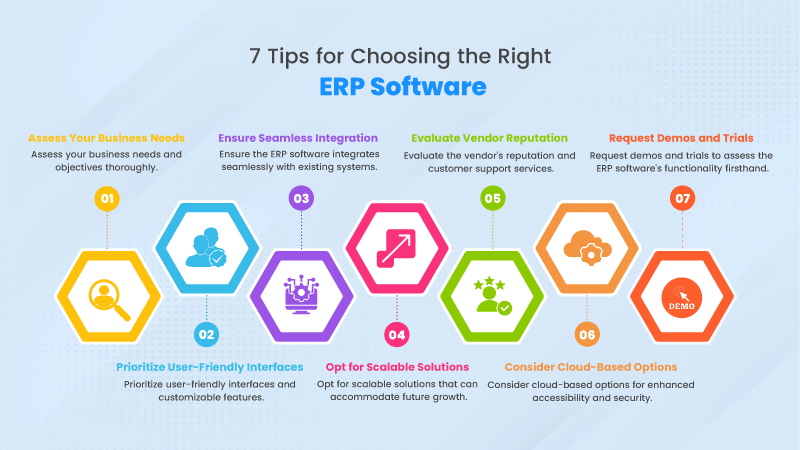Choosing the ideal ERP (Enterprise Resource Planning) system for your school requires a methodical approach to ensure it aligns with your institution's specific needs and integrates smoothly with existing systems. Follow these steps to make an informed decision:
1. Assess Your Needs: Begin by evaluating the specific requirements of your school. Identify the core areas that need improvement, such as student management, financial operations, and administrative processes. Understanding these needs will help you set clear objectives for the ERP system.
2. Research ERP Solutions: Look for ERP systems that specialize in educational institutions. Make a list of options that offer features relevant to your needs, such as enrollment management, grade tracking, and financial reporting.
3. Compare Features: Examine the features and functionalities of each ERP system. Ensure that the system provides essential tools for data integration, real-time reporting, and user management. Evaluate how well each option can adapt to future needs.
4. Check System Compatibility: Ensure the ERP system integrates seamlessly with your current hardware and software. Compatibility is crucial to avoid disruptions and additional costs related to system integration.
5. Evaluate User Experience: Choose a system with an intuitive and user-friendly interface. The ERP should be easy for administrators, teachers, and staff to use, which will facilitate adoption and reduce training time.
6. Review Vendor Support: Investigate the level of support and training offered by the ERP vendor. Adequate support and training resources are essential for a smooth implementation and long-term system success.
7. Analyze Costs: Consider all costs associated with the ERP system, including licensing, implementation, and ongoing maintenance. Ensure that the system fits within your budget and delivers a good return on investment.
8. Seek Feedback: Talk to other schools or institutions that use the ERP systems you are considering. Obtain their feedback on system performance, reliability, and overall satisfaction. Read reviews and case studies for additional insights.
9. Conduct a Trial: If possible, run a pilot test of the ERP system. A trial will help you experience the system's functionality and suitability in a real-world context before making a final commitment.
10. Make an Informed Choice: Based on your evaluation, select the ERP system that best meets your school’s requirements and goals. Involve key stakeholders in the decision-making process to ensure broad support and a successful implementation.
By following these steps, you can choose the right ERP system for your school, enhancing administrative efficiency and supporting your institution’s educational objectives.
